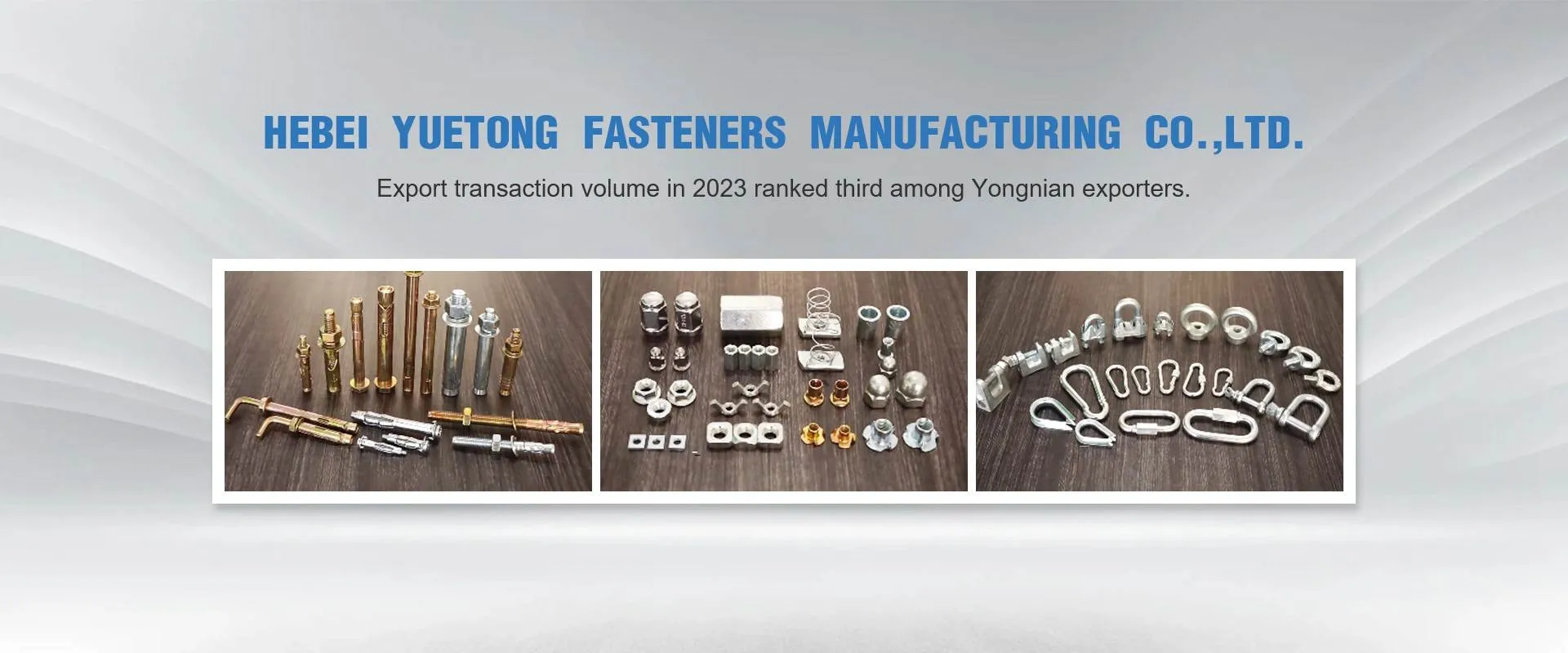Nov . 23, 2024 12:03 Back to list
m6 brass nut
Understanding M6 Brass Nuts A Comprehensive Guide
Brass nuts, particularly those designated as M6, play a vital role in various mechanical and construction applications. The M6 size refers to the metric screw thread, which has a nominal diameter of 6 millimeters. These nuts, typically hexagonal in shape, are widely utilized in engineering due to their strength, corrosion resistance, and aesthetic appeal.
Characteristics of M6 Brass Nuts
Brass is an alloy made primarily of copper and zinc. The significant advantage of using brass for nuts is its excellent corrosion resistance, particularly in environments where materials are exposed to moisture or chemicals. This characteristic makes M6 brass nuts ideal for applications in marine environments or locations with high humidity. Moreover, brass offers a pleasing gold-like appearance, making these nuts suitable for decorative uses in furniture or automotive applications.
M6 brass nuts generally conform to specific standards, such as ISO metric threads, ensuring compatibility with M6 bolts. When selecting M6 brass nuts, it is essential to consider the thread pitch, which for M6 typically is 1.0 mm. This pitch refers to the distance between thread crests and impacts how the nut interacts with the corresponding bolt.
Applications of M6 Brass Nuts
The applications of M6 brass nuts are vast. You will find them in various sectors, including automotive, aerospace, electronics, and construction. For instance, in the automotive industry, these nuts are used to secure various components, including engine parts and chassis, where vibration resistance is necessary.
In electronics, M6 brass nuts are employed to secure circuit boards and cases due to their conductivity and resistance to oxidation. Additionally, they are frequently used in plumbing applications, supporting both water transport systems and other fluid applications. The durability of brass nuts ensures that they maintain their integrity over time, even when exposed to different pressures and temperatures.
m6 brass nut

Advantages of Using Brass Nuts
1. Corrosion Resistance As mentioned, brass nuts do not rust like their steel counterparts, making them ideal for damp or corrosive environments. 2. Durability Brass is known for its high tensile strength, ensuring that M6 nuts can withstand significant stress without deforming.
3. Aesthetic Appeal The gold-like sheen of brass adds a visually pleasing touch to any assembly, making it a popular choice for visible applications.
4. Ease of Installation M6 brass nuts can be easily tightened or loosened using common hand tools, simplifying installation and maintenance tasks.
Limitations of M6 Brass Nuts
While M6 brass nuts provide various advantages, there are some limitations to consider. For instance, brass can be softer than steel, which can lead to issues when running into high-torque situations. Over-tightening can lead to stripping or deformation, especially in applications requiring significant clamping force. Additionally, while brass is resistant to corrosion, it can tarnish over time, potentially affecting its appearance in visible applications.
Conclusion
M6 brass nuts are an excellent choice for a variety of applications due to their strength, corrosion resistance, and aesthetic qualities. Understanding the specific needs of your project will guide you in choosing the right materials, including the right nuts to complement your bolts. Whether you’re in the automotive, construction, or electronics sector, embracing the benefits of M6 brass nuts will undoubtedly lead to successful and durable outcomes in your mechanical assemblies. As with any component, proper handling and installation will ensure that these nuts perform to their fullest potential, ensuring reliability and long-lasting use in your projects.


